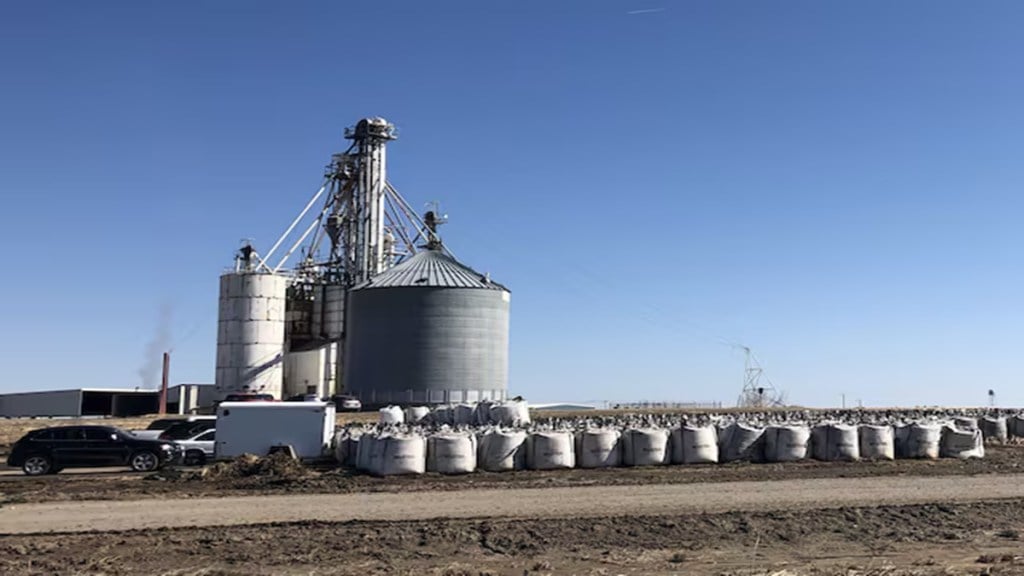By Amit Kapoor
Developing and expanding sustainable energy sources is essential to transitioning to a robust low-carbon economy. In this context, ethanol, one of the principal biofuels, is strategically important to India. With the government’s ambitious goal of achieving 20% ethanol blending (E20) by 2025, efforts are needed to recalibrate the supply of raw materials to support ethanol production.
At the India Bio-Energy & Tech Expo 2024, Hardeep Singh Puri, the Union minister for petroleum and natural gas, underscored the significant strides made in India’s ethanol blending programme. The programme, which saw the ethanol blending percentage surge from 1.53% in 2014 to 15% in 2024, has already yielded substantial benefits. These include Rs 99,014 crore in foreign exchange savings, a reduction of 519 lakh metric tonnes in CO2 emissions, and the substitution of 173 lakh metric tonnes of crude oil. Moreover, the Bio E3 policy, approved by the Union Cabinet last month, underscores the importance of capturing and storing carbon and utilising biomass for achieving net zero targets.
Sugarcane, corn, and rice are the primary raw materials used to produce ethanol all over the world. In India, the National Policy on Biofuels, 2018, with its amendment in 2022, currently includes an expansive list of items as raw material for ethanol production, including heavy molasses, biomass, sugar-containing materials such as sugar beets, and starch-containing materials such as corn. Despite expanding the list of permissible raw materials for ethanol production, finding an optimal mix has been challenging due to the complexities involved, leading to several policy formulation challenges.
In January, oil marketing companies raised the price of corn-based ethanol by Rs 5.70 to Rs 71.86 per litre to compensate for reduced sugar-based ethanol production after the government banned the use of sugarcane juice and syrup to maintain domestic sugar supplies amid last year’s drought. This policy shift increased corn demand, turning India from a net exporter to a net importer.
In 2023-24, India exported corn worth $444 million while importing $39 million, according to ministry of commerce and industry data. Corn exports are merely $46 million in the current year, while imports have already touched $103 million, far exceeding the previous years. Myanmar has become a significant corn exporter to India, totalling $64.73 million in the current year, up from $0.19 million in 2023-24. Corn imports from Ukraine have touched $36.05 million in the current year compared to $30.22 million last year. Overall, India currently has a $57 million trade deficit in corn compared to a $405 million trade surplus in the last year.
Over the past few months, as domestic corn prices have exceeded global rates, India’s poultry sector has struggled with rising feed costs according to industry associations, market research agencies, and key market players. Feed is the most considerable expense in poultry production, making up over 60% of input costs, with corn as the main ingredient comprising up to 65%. In response, industry groups are calling for importing 5 million tonnes of duty-free corn and approval of genetically modified corn for feed purposes, as current import duties are as high as 50%. Additionally, farmers are shifting from soya bean to corn cultivation due to higher returns, creating challenges for small poultry farmers who are now forced to reduce production and find alternative feed ingredients to manage costs.
Besides corn, rice also witnessed adverse conditions, with an added dilemmas over its competing usage for food and fuel. A report by Arcus Policy Research said that in 2022, about 1 million tonnes of Food Corporation of India (FCI) rice was sold to distillers at subsidised rates for ethanol production. In July 2023, the supply of broken and surplus rice for grain-based ethanol makers through the FCI was halted. This announcement came after the ban on the export of non-basmati white rice on July 20, 2023, to contain rising domestic prices. Last month, the government permitted the sale of up to 2.3 million tonnes of FCI rice stocks to grain-based ethanol distilleries between August and October under the open market sale scheme due to surplus rice stocks exceeding 54 million tonnes. Such supply shocks are exacerbated by constraints such as erratic rains and droughts associated with paddy cultivation in India and its continued fight against malnutrition among children.
In the face of climate change, energy security threatens India, as it is one of the fastest-growing economies in the world and simultaneously the most populous. India reached its E12 ethanol blending target in April 2023, aiming for E20 by 2025. However, it faces challenges in raw material procurement as current ethanol production from molasses and grains is insufficient to meet the E20 target. It’s crucial to ensure steady access to raw materials for ethanol production while considering other industries’ needs and the impact on food security.
To address these concerns, India is moving towards second-generation (2G) bioethanol, which uses agricultural waste as a sustainable feedstock, utilising 500 million tonnes of agricultural waste annually produced in the country. In March 2019, the government introduced the Pradhan Mantri JI-VAN to support advanced biofuel projects financially. Additionally, two second-generation refineries have been established in Panipat and Numaligarh to convert agricultural residues such as stubble and bamboo into ethanol.
Strategic land planning is also essential. India lost about 5 million hectares of arable land between 1978-79 and 2018-19, while fallow land increased by 4.3 million hectares, according to a report published by Arcus Policy Research. Without proper land planning, expanding fuel crops could reduce land available for food crops. Reviving fallow lands for fuel crops can enhance ethanol output without reducing the area under food crops. This approach can help balance the needs of ethanol production with other industries and maintain food security, ensuring a more predictable and sustainable supply of raw materials.
Mukul Anand, researcher at the Institute for Competitiveness, contributed to the article.
The author is the chairman, Institute for Competitiveness.
Disclaimer: Views expressed are personal and do not reflect the official position or policy of FinancialExpress.com. Reproducing this content without permission is prohibited.

